Do you crave specific flavor notes in your tea, like maltiness, fruity undertones, or earthy hints?
If yes, Assam tea has a lot to offer in terms of taste.
In this guide, I’ll talk about the flavor profile of Assam tea in detail, in case you want to try this rich malty tea from Assam, India.
Starting with basics, so, what does assam tea taste like?
Assam tea boasts a bold and robust flavor, known for its malty, earthy, and spicy undertones. It often carries a brisk, astringent kick, which can be described as a pleasant bitterness.
The taste is full-bodied and has a distinctive earthy note, making it an ideal choice for those who prefer a strong cup of tea.
But that’s not it..
Assam black tea taste can vary depending on the flushes, processing, and what you pair it with.
Want to learn about these all?
Keep scrolling then!
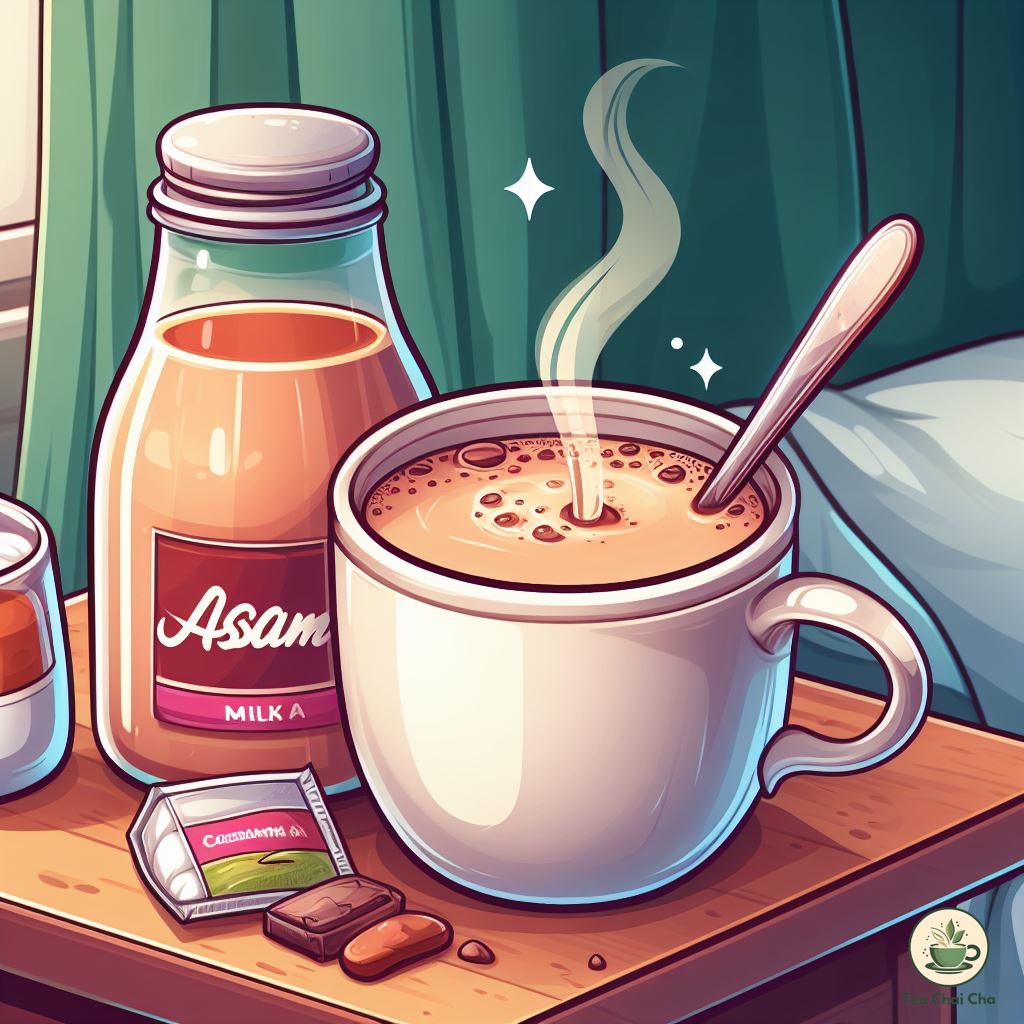
What Does Assam Milk Tea Taste Like?
Assam milk tea, also known as Assam Chai, blends the robustness of Assam tea with the creamy richness of milk.
The result is a smooth, velvety texture that complements the tea’s bold and malty flavors.
The milk adds a subtle sweetness and balances the tea’s natural bitterness, creating a comforting, well-rounded taste with a touch of warmth.
It’s a delightful choice for those seeking a creamy, full-bodied tea experience.
Why Does Assam Tea Taste So?
Assam tea tastes the way it does due to the unique climate and terroir of the Assam region.
The tea bushes thrive in the rich, loamy soil and abundant rainfall, which impart a bold and malty flavor.
The Camellia sinensis varietal used also contributes to the distinctive taste, known for its brisk, astringent quality.
The combination of all these factors results in the signature boldness and robustness that Assam tea is celebrated for.
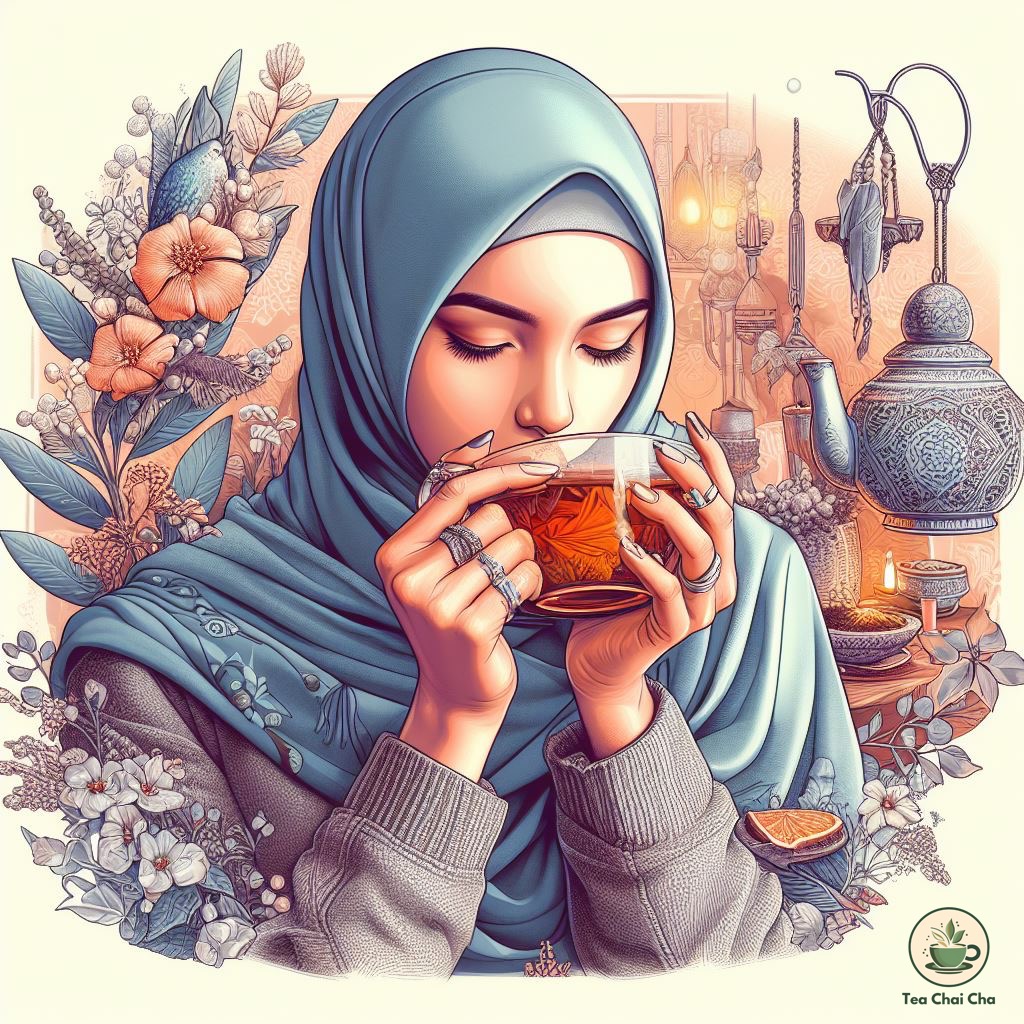
6 Different Tastes of Assam Tea
Assam tea can surprise you with various, bold and robust, tasting notes.
In my experience, most of the Assam black teas feature these flavors.
1. Rich and Malty Flavor
Assam tea is known for its rich and malty flavor.
This taste comes from the unique combination of climate and soil in the Assam region.
The low elevation and the monsoon rains contribute to the tea plant’s rapid growth, resulting in a tea with a strong, robust character and a malt-like sweetness.
2. Brisk and Astringent Notes
The briskness and astringency in Assam tea are due to the abundance of tannins in the tea leaves.
Tannins are naturally occurring compounds that create a slightly bitter and astringent taste.
The Assam region’s ideal conditions for tea cultivation help produce leaves with a higher tannin content, giving the tea its signature briskness.
3. Earthy Undertones
Assam tea often carries earthy undertones in its taste profile.
These earthy notes arise from the soil composition in the Assam region, which is rich in minerals.
The tea plants absorb these minerals, imparting a subtle earthy quality to the brew, making it distinct from other teas.
4. Bold and Invigorating
The bold and invigorating character of Assam tea is the result of the Camellia sinensis var. assamica tea plant.
This particular tea plant variety, native to Assam, produces leaves that are larger and heartier compared to other tea varieties.
As a result, the brewed tea is exceptionally full-bodied and stimulating.
5. Floral and Fruity Undertones
Some Assam teas offer floral and fruity undertones, such as hints of honey, caramel, and even dried fruit.
These subtler notes can be attributed to the specific tea estate and processing methods employed.
Different estates and techniques bring out these variations, adding to the diversity of Assam tea’s taste.
6. Spice Notes
Assam tea can sometimes surprise you with subtle spice notes in its flavor profile.
These spicy undertones, like hints of cinnamon, cardamom, ginger, and pepper, can be more pronounced in certain Assam teas.
The presence of these spice notes is often influenced by the particular tea estate and tea processing techniques used.
What Do Different Flushes of Assam Tea Taste Like?
Every flush of Assam tea shows different brew colors and flavor profiles.
Here’s what you can expect from different flushes.
| Flushes | Taste | Brew Color | Caffeine | Nutrients/Antioxidants |
|---|---|---|---|---|
| First Flush | Fresh, Floral, Nutrient-Rich | Light | High | Abundant in catechins and polyphenols |
| Second Flush | Rich, Malty | Deep Red-Brown | Moderate to High | Contains theaflavins and thearubigins |
| Monsoon Flush | Earthy, Bold | Strong | Moderate to High | Contains caffeine, theophylline, and theobromine |
| Autumn Flush | Fruity, Smooth | Amber | Moderate | A source of essential vitamins and minerals |
-> First Flush: Fresh and Grassy
The first flush of Assam tea, harvested in early spring, is known for its fresh and grassy taste.
This unique flavor comes from the young tea leaves that haven’t fully matured.
These leaves have a light and delicate character, which imparts a grassy and vegetal note to the tea.
The early picking time also results in a lighter color of the liquor.
-> Second Flush: Rich and Malty
The second flush, collected in late spring and early summer, is when Assam tea showcases its iconic characteristics.
This flush offers a rich and malty taste, often accompanied by a distinct sweetness.
The flavor profile is a result of the tea leaves maturing and developing more complexity.
The deep, reddish-brown color of the tea reflects its strength and full-bodied nature.
-> Monsoon Flush: Earthy and Bold
The monsoon flush, harvested during the rainy season, is known for its earthy and bold flavors.
This flush is influenced by the heavy rainfall and high humidity, which intensifies the tea’s taste.
It has a strong, robust body, and the infusion can exhibit earthy, woody notes, making it a unique choice for those who appreciate a more intense tea experience.
-> Autumn Flush: Fruity and Smooth
The autumn flush, collected in the later part of the year, offers a fruity and smooth profile.
This flush benefits from the milder weather and gets its fruitiness from the slower growth of tea leaves.
The result is a mellow and well-balanced tea with subtle fruit undertones that make it a pleasant choice for those who prefer a softer, less astringent brew.

Which Assam Tea Type Is Best for Who?
Now, I’ll share some types of Assam tea that you can pick based on your taste preference.
| Assam Tea Type | Flavor Profile | Best For |
|---|---|---|
| Assam Black Tea | Bold, Malty, Earthy, Brisk | Those who prefer a strong and robust morning tea. |
| Assam Green Tea | Grassy, Vegetal, Mild Astringency | Tea enthusiasts seeking a lighter, fresh taste. |
| Assam White Tea | Subtle, Sweet, Honey, Fruity | People who enjoy a gentle, soothing tea experience. |
| Assam Milk Tea | Creamy, Robust, Balanced, Comforting | Those who love a comforting and velvety cup of tea. |
| Assam Flavored Tea | Varied (Depends on Flavor Infusions), Unique | Adventurous tea drinkers who like unique flavors. |
| Assam Breakfast Blends | Strong, Robust, Ideal for Mornings | Early risers in need of a hearty morning kick. |
-> Assam Black Tea
If you prefer a straightforward and robust tea, Assam Black Tea is the way to go.
It’s ideal for those who like a bold, malty flavor with a hint of briskness.
The deep, earthy notes make it perfect for those who enjoy a strong and invigorating cup of tea.
-> Assam Green Tea
For a lighter and fresher taste, Assam Green Tea is the choice.
It offers a more grassy and vegetal flavor with a gentle astringency.
If you’re looking for a tea with a touch of bitterness but not as intense as black tea, this might be your cup of tea.
-> Assam White Tea
If you desire a milder and delicate flavor, Assam White Tea is the answer.
It’s known for its subtle, sweet notes, often with hints of honey and fruit.
This tea is perfect for those who appreciate a gentle, soothing tea experience.
-> Assam Breakfast Blends
If you’re a fan of hearty and invigorating morning teas, Assam Breakfast Blends are the way to go.
These blends combine the boldness of Assam tea with other black teas, creating a robust and rich flavor.
They are designed for those who want a strong and energizing start to their day.
-> Assam Flavored Tea
If you like a twist on tradition, try Assam Flavored Tea.
It comes in various flavors like chocolate, fruit, spices, or floral infusions, adding a layer of complexity to the tea’s natural character.
These teas cater to those who seek a unique and adventurous tea experience with added flavor dimensions.
Effect of Tea Processing on Assam Flavor
Let’s explore how the processing of Assam tea leaves leads to distinct flavor differences between “Orthodox Assam” and “CTC Assam” varieties.
These two methods give rise to unique taste profiles, making one the refined choice and the other a more everyday option.
| Aspect | Orthodox Assam Tea | CTC Assam Tea |
|---|---|---|
| Processing Method | Mostly hand-processed | Mostly machine-processed, minimal handwork |
| Form | Loose leaves | Teabag |
| Quality | Highest quality | Good quality |
| Flavor | Delicate taste with complexity | Malty, bold, and brisk |
| Uses | Best for standalone tea experienceOffer many healthy benefits | Base tea for other blends, suitable with condiments (milk, cream) |
-> Orthodox Assam Tea
The “Cadillac” of Assam tea, Orthodox Assam undergoes a meticulous hand-rolling process.
This method preserves the leaves’ natural structure, promoting complex flavors.
It has a smooth and malty taste with subtle floral notes, creating a well-balanced and exquisite tea experience.
The slower processing allows for a higher degree of customization in the final flavor.

-> CTC Assam Tea
On the other hand, CTC Assam, standing for “cut-tear-curl,” is a more mass-produced approach.
The tea leaves go through machine processing, resulting in smaller, uniform tea particles.
CTC Assam offers a bold and brisk flavor profile.
It’s known for its quick brew and strong, robust taste.
This method’s efficiency caters to a more everyday tea-drinking experience.
5 Teas That Taste like Assam Tea
If you enjoy the taste of Assam black tea and are looking to explore other options, here are some alternative teas that offer similar flavor profiles.
These teas share characteristics that make them appealing to those who appreciate the bold and robust nature of Assam tea.
| Tea Type | Flavor Profile | Notable Characteristics |
|---|---|---|
| Ceylon Tea | Bold, full-bodied with citrusy notes | Lively, akin to Assam’s boldness |
| Kenyan Tea | Robust, slightly astringent | Rich and bold, similar to Assam |
| Yunnan Black Tea | Earthy, malty, smooth | Mellow taste, with a touch of Chinese charm |
| Keemun Black Tea | Bold, smoky, wine-like | Offers a rich, full-bodied alternative to Assam |
| Nepal Tea | Strong, malty, brisk | Bold and brisk, much like Assam’s character |
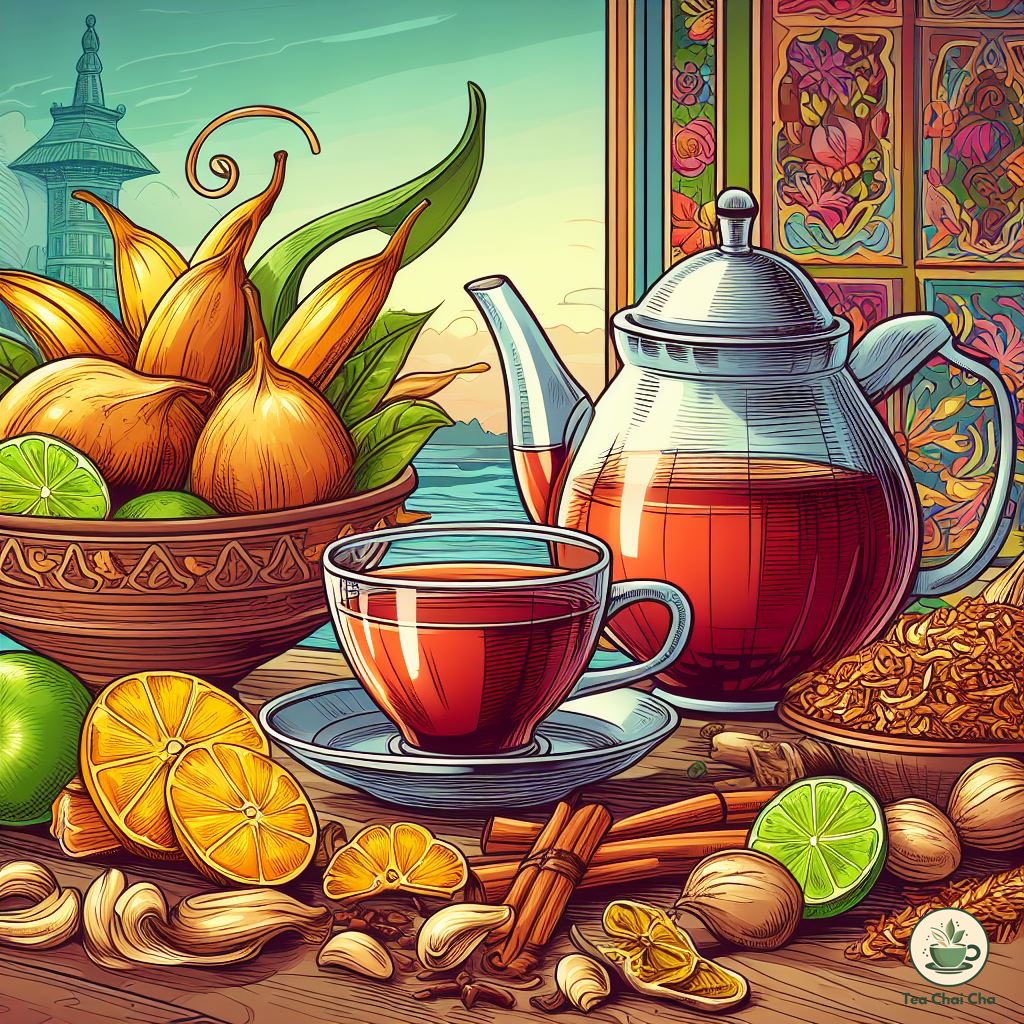
1. Ceylon Tea
For those who love the strong and full-bodied nature of Assam tea, Ceylon tea from Sri Lanka is a great choice.
It shares that boldness and often has a lively flavor with a hint of citrus notes, providing a taste similar to Assam.
2. Kenyan Tea
If you enjoy the robust and bold qualities of Assam, Kenyan tea might be your cup of tea.
It carries a slightly astringent quality and a rich depth, reminiscent of the Assam flavor you know and love.
3. Yunnan Black Tea
China’s Yunnan black tea offers an earthy and malty profile, much like Assam tea.
It has a smooth, mellow taste that closely resembles the Assam experience, with a touch of Chinese charm.
4. Keemun Black Tea
If you’re looking for an alternative with bold, full-bodied flavor, Keemun black tea from China is a great option.
It often features smoky undertones and a rich, wine-like quality, making it an intriguing choice for Assam enthusiasts.
5. Nepal Tea
For a taste similar to Assam, especially its strong, malty character, consider exploring Nepalese teas, especially those grown at higher elevations.
They offer a bold and brisk experience, much like the beloved Assam.

How to Buy the Best Tasting Assam Tea
When it comes to finding the best-tasting Assam tea, a few key factors come into play. Let’s explore some first-hand expert tips that will help you choose the perfect brew to satisfy your taste buds.
1. Tea Type Matters: CTC or Orthodox
Assam teas come in two main varieties: CTC (Crush, Tear, Curl) and Orthodox.
CTC tea is known for its strong, bold flavor and is often used in traditional Indian chai.
On the other hand, Orthodox Assam tea offers a more complex taste, with subtle notes and a smooth finish.
Consider your preference between these two styles.
2. Pay Attention to Flushes
Assam teas are harvested during different flushes – the first flush, second flush, and so on.
Each flush has its unique characteristics.
The second flush is usually preferred for its rich, malty taste and full-bodied flavor.
Be sure to check which flush the tea you’re interested in belongs to.
3. Aroma and Appearance
A good Assam tea should have a deep, malty aroma that is often associated with the region.
When it comes to the appearance, the leaves should be small and dark.
The more golden tips you see, the better the quality.
4. Origin Counts
Assam is not only a region but also a state in India.
Different estates within Assam can produce teas with distinct flavors.
Single-estate Assam teas are highly regarded for their unique taste.
Do a bit of research on the tea’s origin to ensure you’re getting what you desire.
5. Read Reviews and Seek Recommendations
Before making a purchase, read reviews from other tea enthusiasts to get an idea of the flavor profile.
Additionally, don’t hesitate to ask for recommendations from fellow tea lovers or your local tea shop.
They might point you in the direction of some exceptional Assam teas.
6. Freshness Matters
Like any other tea, freshness is crucial for Assam tea.
Look for tea suppliers who provide information on the harvest date.
Fresher tea will offer a more vibrant and enjoyable taste.
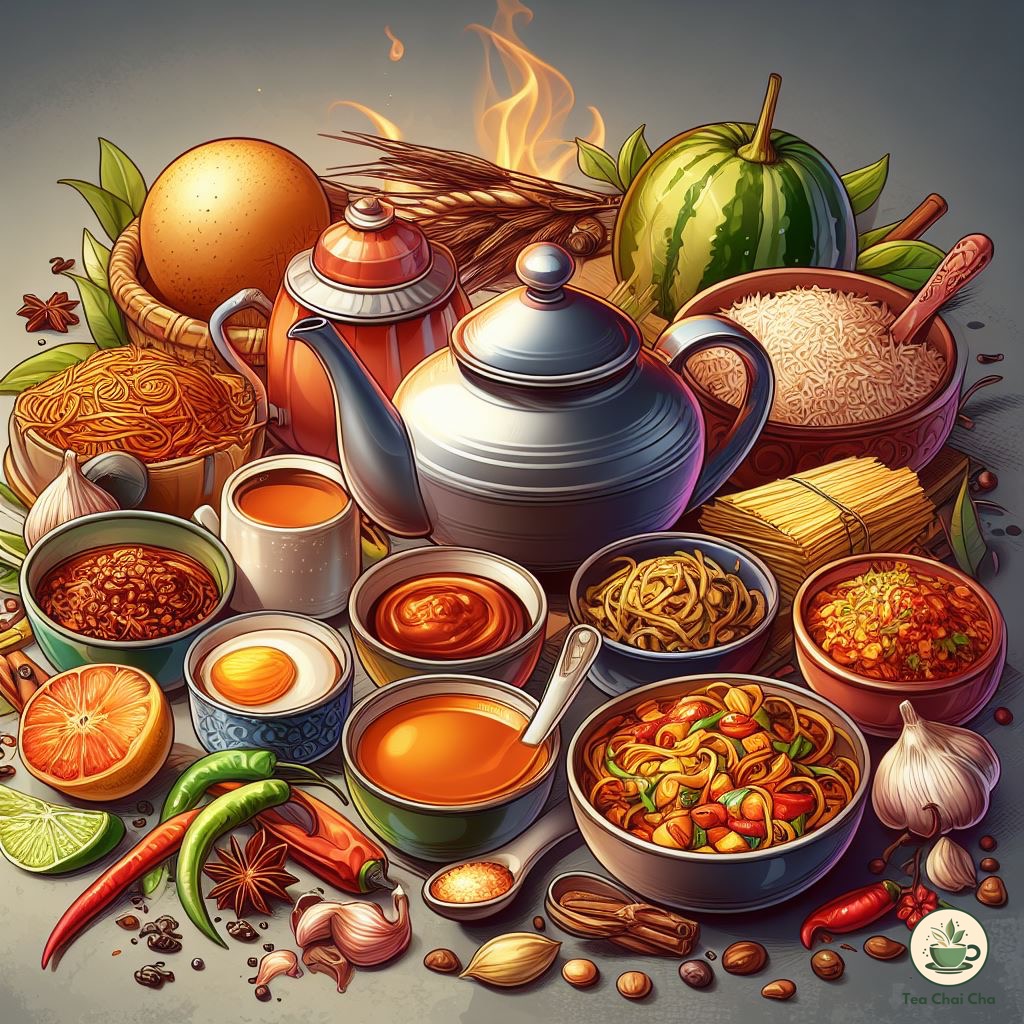
What Flavors Pair Well with Assam Tea
Want to further tweak the flavor of your Assam tea, consider my food pairing suggestions to complement its robust flavors:
1. Bold and Spicy Foods
If you enjoy a bit of heat in your dishes, pair Assam tea with spicy cuisines like Indian curries, Mexican salsas, or Thai stir-fries.
The tea’s boldness can stand up to the spiciness, creating a flavorful combination.
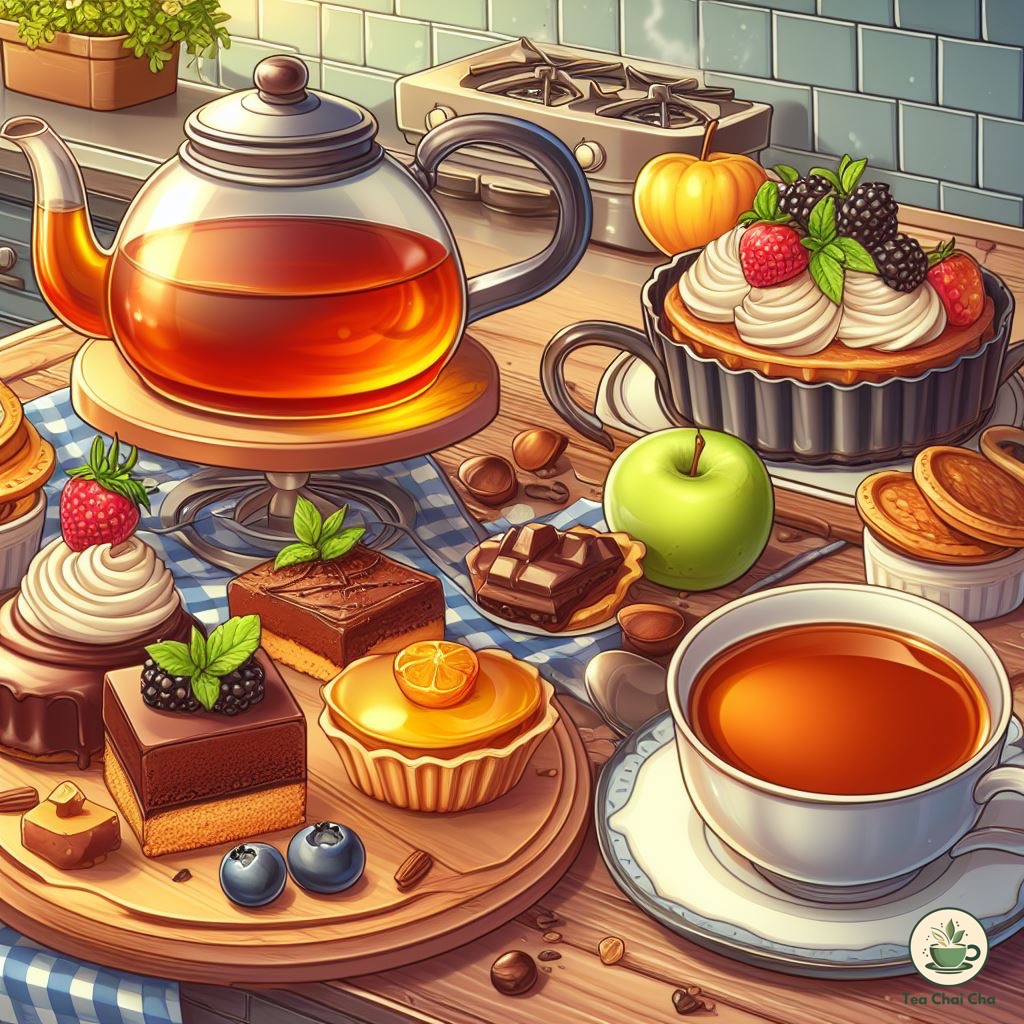
2. Sweet Treats
For a touch of sweetness, savor Assam tea alongside desserts like chocolate brownies, caramel custard, or fruit tarts.
The tea’s malty notes can harmonize with these sugary delights.

3. Savory Snacks
Assam tea makes an excellent companion to savory snacks such as cheese platters, roasted nuts, or even a classic sandwich.
Its astringency can cut through the richness of these bites.

4. Breakfast Classics
Start your day right by pairing Assam tea with breakfast classics like bacon and eggs, buttered toast, or flaky croissants.
The tea’s boldness complements the hearty flavors of a morning meal.
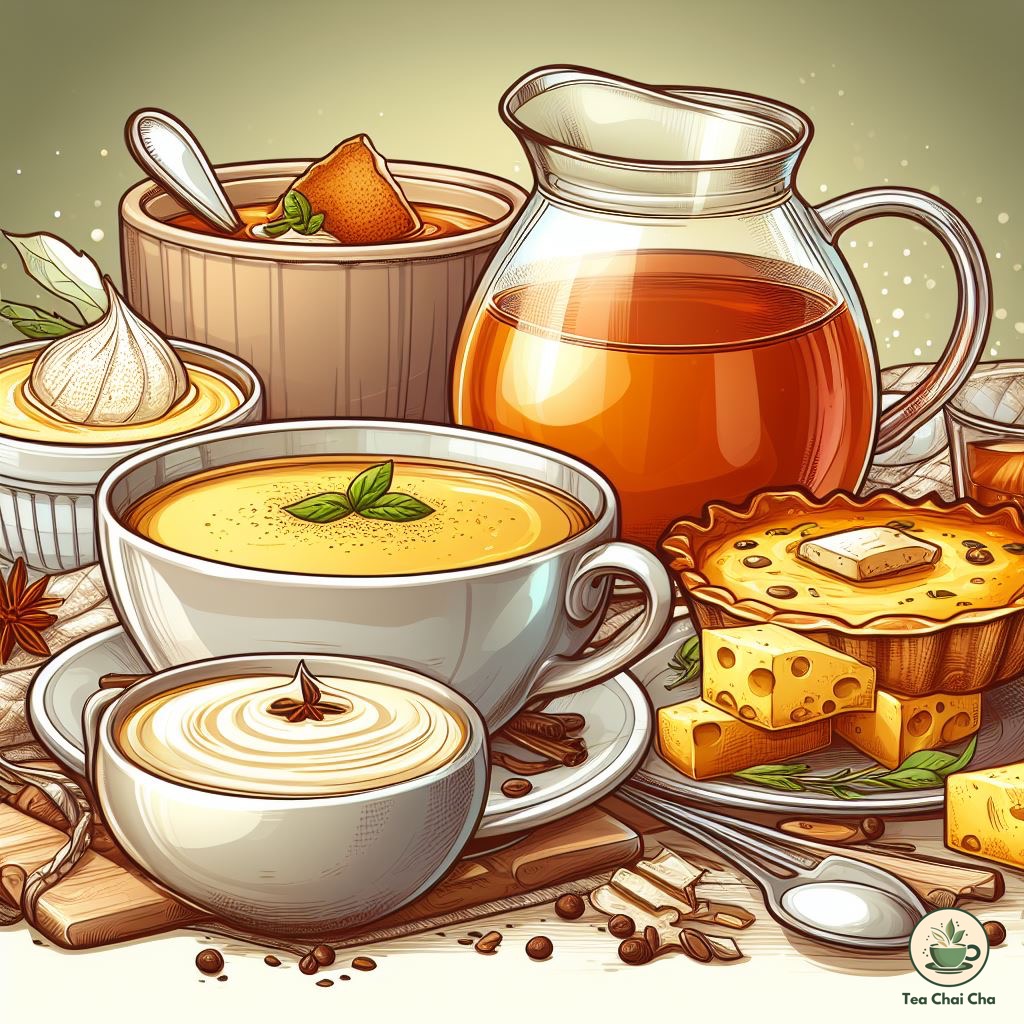
5. Creamy Delights
When craving creamy indulgence, enjoy Assam tea with dairy-based foods like creamy soups, quiches, or cheese fondue.
The tea’s natural richness complements these dishes.
